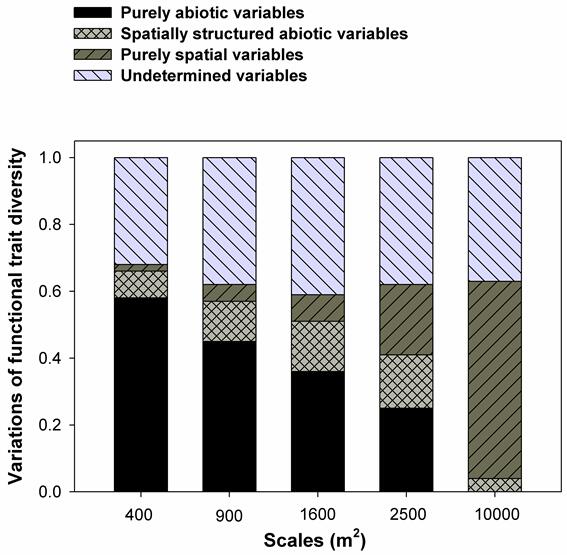Disentangling ecological processes that influence community assembly and species diversity across spatial scales remains a major goal of community ecology. Community assembly processes influence spatial patterns of species diversity through their interactions with plant functional traits. Hence, quantifying spatial patterns of functional trait diversity (FD) represents a key tool for disentangling the relative importance of abiotic filtering, biotic interactions, random assembly, and dispersal limitation across spatial scales.
Here, in a 20-ha fully-mapped species-rich subtropical forest permanent plot, researchers from South China Botanical Garden, Chinese Academy of Sciences, employ multiple tests with complementary functions (two FD-based tests and one spatial analysis) to quantify spatial patterns of FD of key functional traits that are tightly associated with key physiological processes of plant life history strategies at multiple spatial scales. They demonstrate that abiotic filtering is the major determinant responsible for trait convergence at relatively small scales (400-1600m2), whereas dispersal limitation becomes dominant, causing the weakening of trait convergence at relatively large scales (2500-10000m2). Their results highlight the relative contributions of different ecological processes to community assembly at different spatial scales, which can be distinguished using the diversity patterns of key functional traits.
This work was funded by the National Natural Science Foundation of China (31770469, 41371078 and 31570405), Chinese Forest Biodiversity Monitoring Network, and the CAS/SAFEA International Partnership Program for Creative Research Teams.
Article linkage: http://onlinelibrary.wiley.com/doi/10.1111/1365-2435.13079/epdf.

Figure. The variations of functional trait diversity partitioned into purely abiotic, spatially structured abiotic, purely spatial and undetermined variables across spatial scales.
